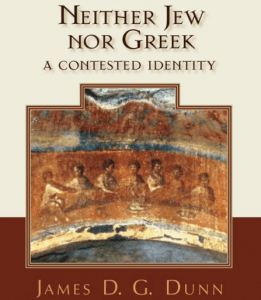 A recent book in the excellent “Guide for the Perplexed” series is by Helen K. Bond, a notable New Testament historian at the University of Edinburgh. Her book is called The Historical Jesus. Raising this topic means we need to get a few ideas straight again.
A recent book in the excellent “Guide for the Perplexed” series is by Helen K. Bond, a notable New Testament historian at the University of Edinburgh. Her book is called The Historical Jesus. Raising this topic means we need to get a few ideas straight again.
The historical Jesus is the reconstruction, by an individual scholar, of what Jesus was really like (a) on the basis of historical methods and (2) over against what the church has said about Jesus in the Gospels, the New Testament and the earliest creeds. I’ve said this before: the historical Jesus is not a fancy term for the real person at work in the Gospels. The historical Jesus is the product of an enterprise: the historians at work on the Gospels, sifting through the records to determine what is good solid history and what is impossible to prove or what is obviously added and then, on the basis of that critical examination of the Gospels, a reconstruction of what Jesus was more likely like.
I’ll put it directly: if you think everything in the Gospels is authentic, and then you seek to pull together the various strands of the Gospels into a coherent life of Jesus, you are not doing historical Jesus studies. No one can do historical Jesus studies unless he or she thinks the Gospels need to be sifted. Again, this is an enterprise: the enterprise of finding the Jesus behind the Gospels that were shaped by the faith of the earliest Christians and not always authentic.
How do you understand the “historical” Jesus? What value does the historical Jesus have for the church?
I know of no better basic introduction to the historical Jesus than this slender, accessible, comprehensive study by Helen Bond. Instead of talking about HJS (historical Jesus studies) this volume sketches events, actions, and words of Jesus and offers quick, standard, and consensus-type judgments on what we can know. She relies on her consensus taking and on her own judgments. It’s a remarkable volume, if one is looking for a standard sketch of how historical Jesus scholars do their work. Her understanding of what history is — the man, reconstruction, interpretation, limited results, not the same as the church’s Jesus — approaches mine though she doesn’t posit the HJ over against the church quite as directly as I do. I sense she’d agree.
She sketches some major quests for Jesus (Reimarus to Schweitzer, Bultmann,third quest, and then settles into brief sketches of Vermes, Sanders, Horsley, Jesus Seminar, Crossan, Flusser, J.P. Meier, Wright, Dunn and Allison). Then sources and concludes there’s not much help outside the Gospels, and this chp shows off her method of cautious reasoning.
A couple snapshots of her snapshots: on virginal conception: texts in the NT show Jesus is son of Joseph, born of a virgin, and illegitimate. “The simplest way through the evidence is to go along with the assumption of the majority of the New Testament writers and to take it that Jesus was born quite naturally to his father Joseph. The story of the virginal conception… seems to have been an early attempt to show both that Jesus’ miraculous birth signalled from the start that he would be a great man, and also an attempt symbolically to underline his divine paternity” (70).
“The Kingdom of God, then, is a shorthand way to describe what the world would be like if God were in control, to symbolize his reign of justice, mercy and peace” (90). [And, love, I might add.]
On miracles, she gives a good sketch of sociological explanations but then concludes “… how much of the miracle tradition we are willing to accept as historical is probably determined by our own worldview and where we draw the line on the spectrum of plausibility” (108). Ever cautious, Bond doesn’t put her cards on the table for all to see.
Who did Jesus think he was? The titles for Jesus are Christian terms from later times; he had a strong sense of vocation; he’s linked to a number of Scriptural figures but how many go back to Jesus is not clear; saw himself as God’s last envoy. Messiah? “Certainly it is not a title that Jesus seems to have welcomed. He never refers to himself in this way and appears to distance himself from the term… [his] preaching concerned God and God’s kingly reign rather than himself… He may have had a general sense of being anointed… What others thought about Jesus, then, is just as important in working out Jesus’ role as his own self-perception” (110-111).
On the resurrection, she spells it with upper case always: “Resurrection.” She sketches the Jewish context; it’s about the general resurrection at the end of time. There are reports of an empty tomb and appearances. The apocalyptic themes of Jesus combined with the empty tomb and appearances to generate belief in the Resurrection. I do not know how Bond explains the empty tomb. She doesn’t say.











